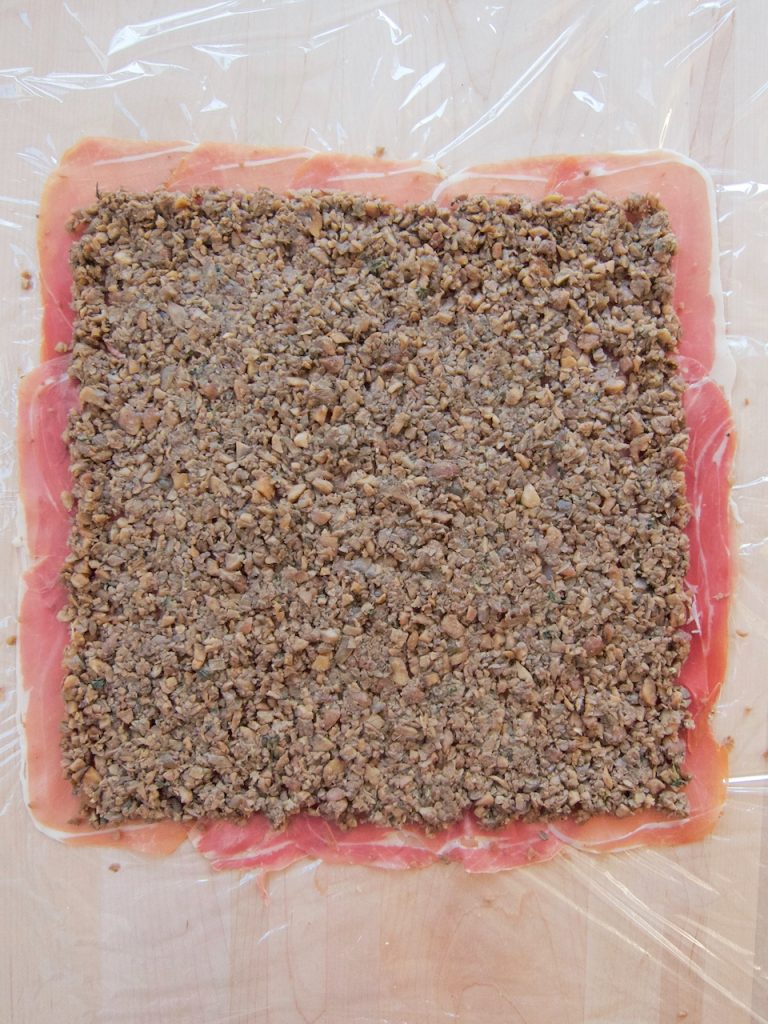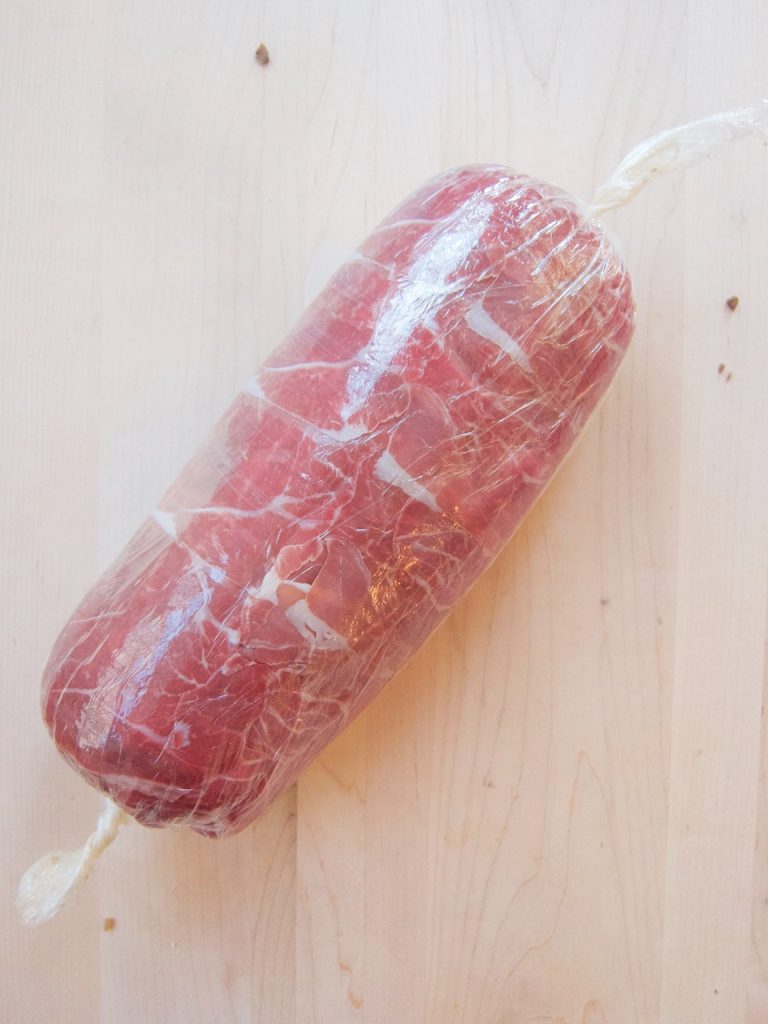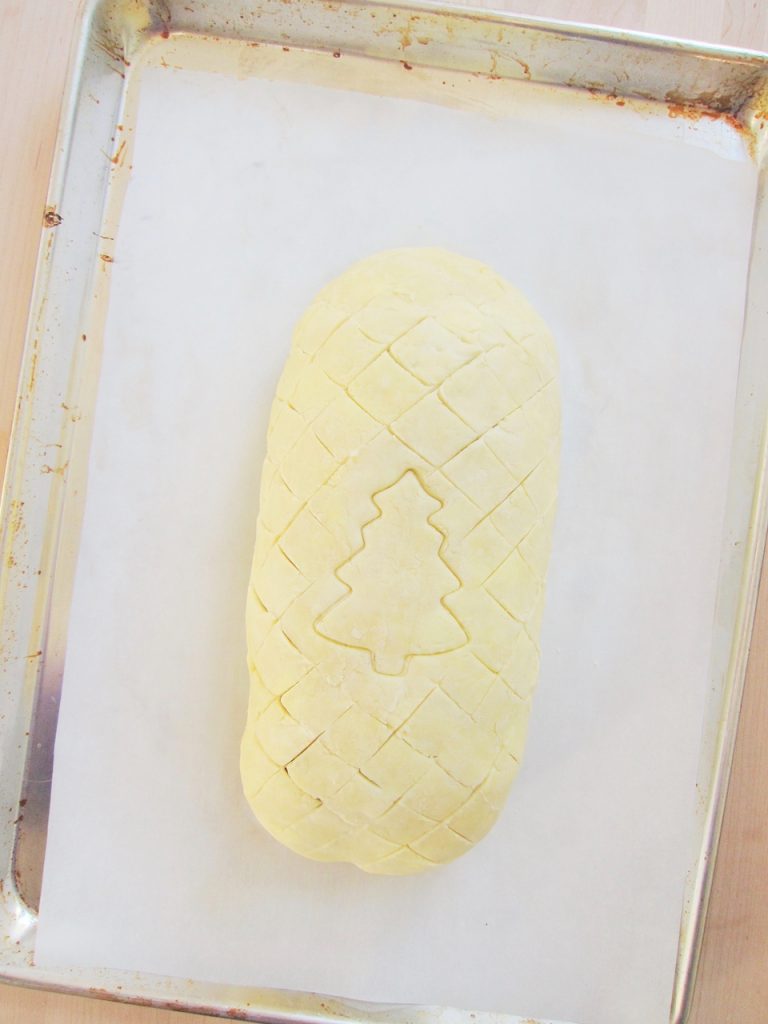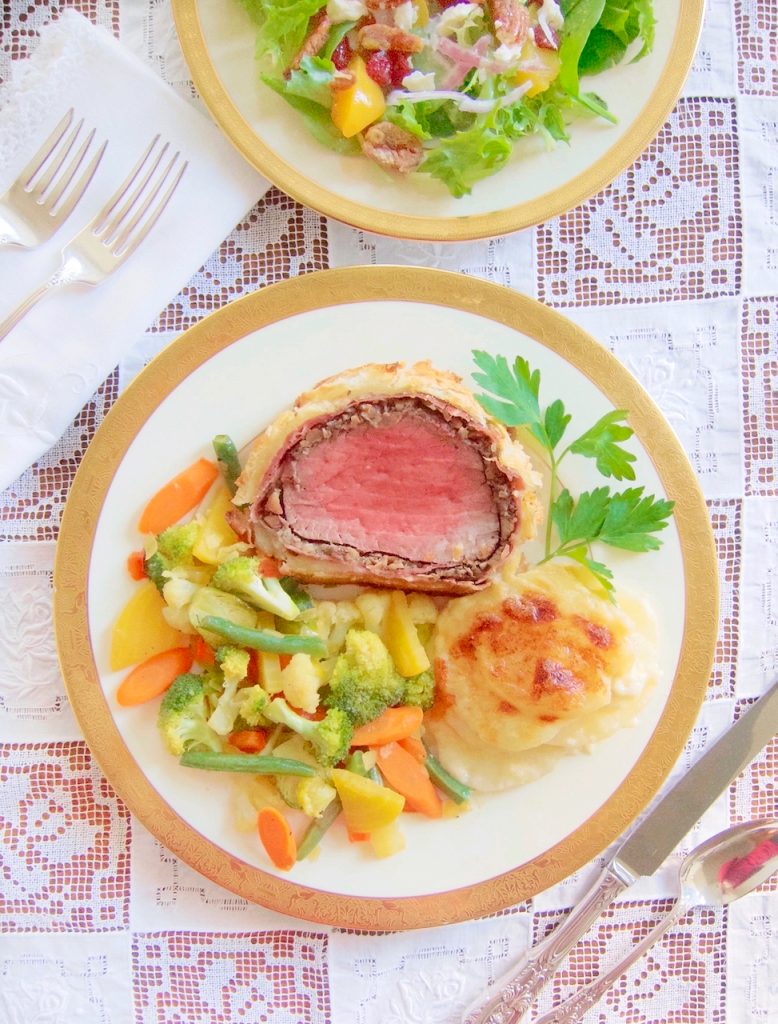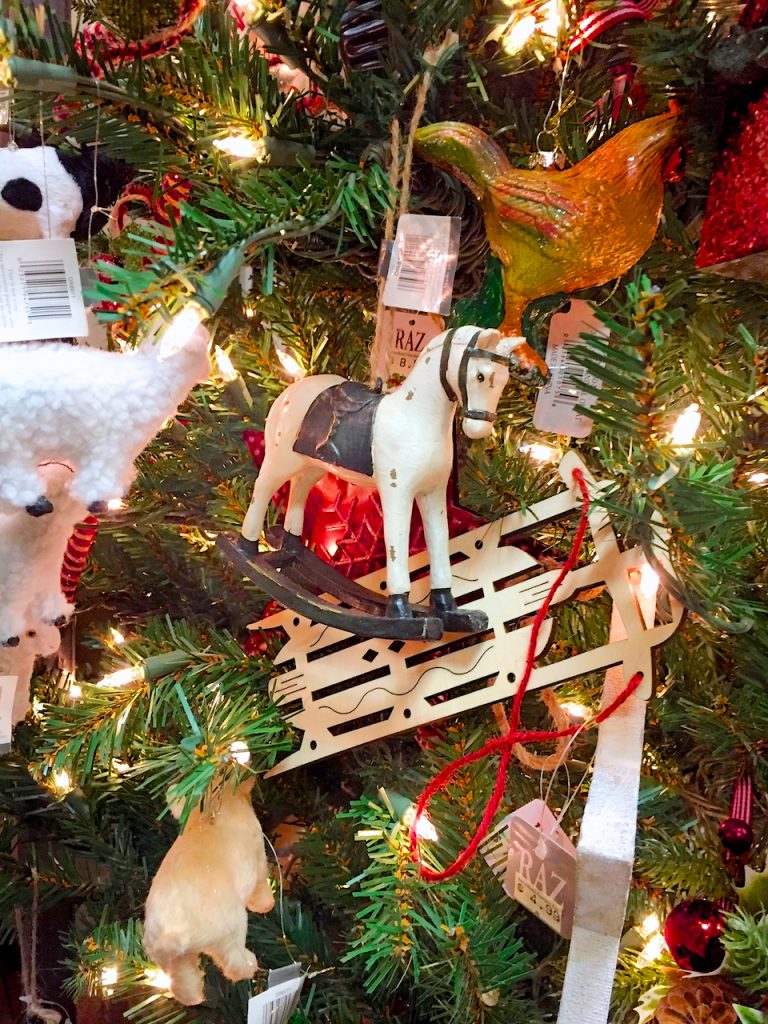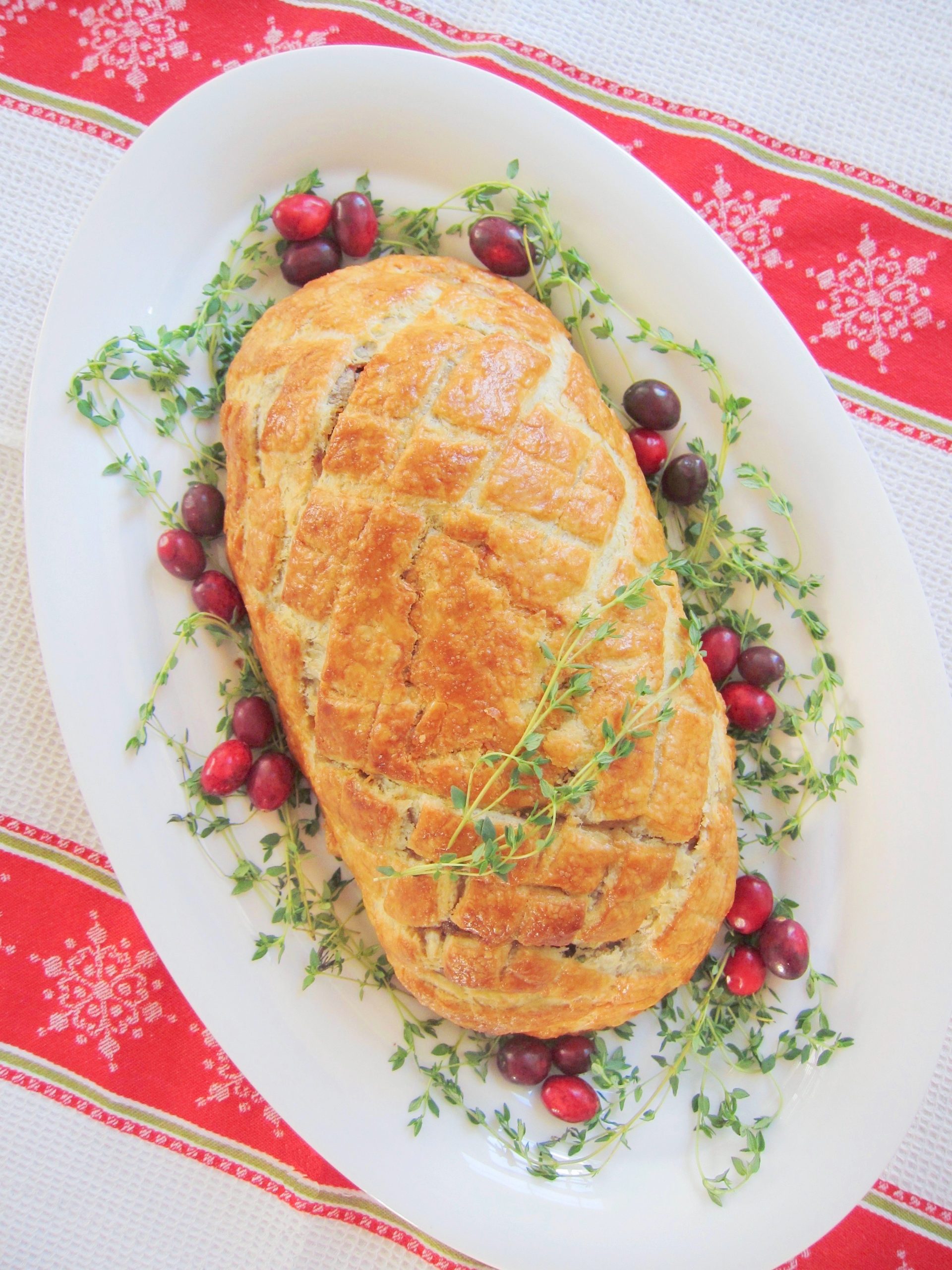Christmas Beef Wellington
If you are looking for a centerpiece meat for Christmas like a turkey is for Thanksgiving, beef Wellington will do the job very nicely. Along with being a showstopper, it’s really delicious.
Like roasting a turkey and making the stuffing and gravy, it’s a little bit of work that, unless you are a natural, will require some practice to get right, and there are a lot of videos on youtube that will walk you through the steps of putting a beef Wellington together. It’s not an exact science because the size of the chateaubriand changes the dimensions of the laid out prosciutto and the duxelles and the pastry. You may nail it the first time, or you may need a little more experience to get it the way you want it. Watching videos, besides the three I’m mentioning here, will help with the learning curve because the each chef mentions something they do to help get it assembled right. The chef’s are experts at being able to roll a Wellington tightly. Lacking the expertise, I found that it’s easier to get the tighter roll when you have made everything the day before and the seared tenderloin is cold and holds its shape while you are rolling it. Also, the colder and firmer the procuitto wrapped tenderloin, the easier to get the pastry on it snug.
The center cut of a beef tenderloin, or chateaubriand, is one of the most expensive cuts of meat. To save some money, there are also videos for cutting up a whole beef tenderloin so you end up with meat for several more meals for the price of the center cut already being cut and trimmed for you.
This recipe is a combination of Tyler Florence’s Ultimate Beef Wellington recipe and Gordon Ramsey’s Christmas Beef Wellington recipe with the surprise Christmas ingredient, chestnuts added to the duxelles filling. I also recommend Grant Crilly’s video for some good pointers.
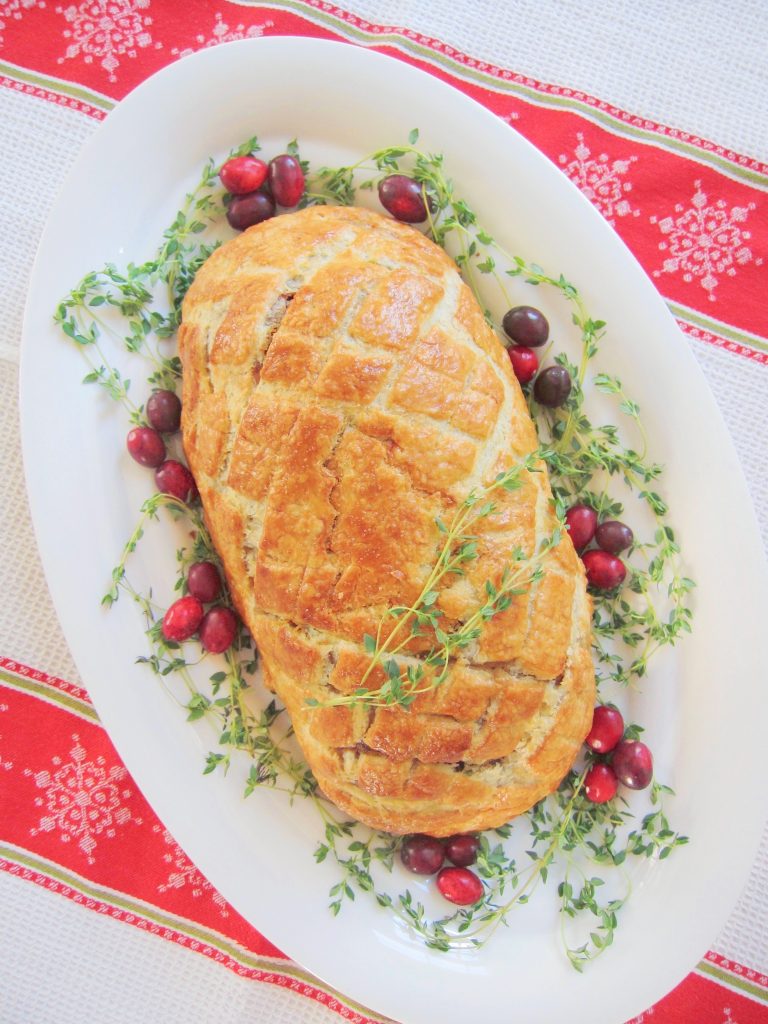
Christmas Beef Wellington
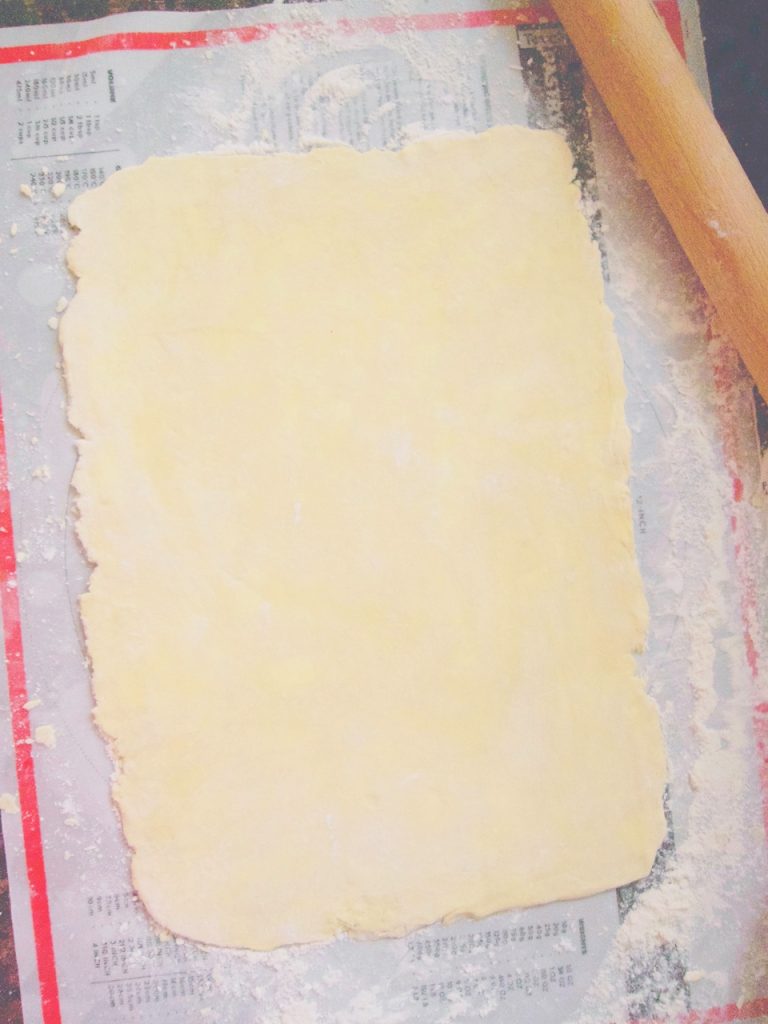
Puff Pastry
If you have a small 1 1/2 pound center tenderloin, you can use 1 box of Dufour Puff Pastry which is the top recommended brand. If your center tenderloin is 2 pounds or larger, you may run short of pastry and need two boxes which at $10 to $11 a piece is expensive. Pepperidge Farms Puff Pastry Sheets, at $5 to $6, are not made with butter but they are fine. During the holidays, Trader Joe’s carries an all butter puff pastry that is a lot less expensive than Dufour’s.
This great recipe from Rosemary at An Italian in My Kitchen makes having pastry made with butter that is really easy. This is her 10 Minute Homemade Puff Pastry.
Ingredients
- 260 gr (about 2 cups) flour
- 1 1/4 cups cold unsalted butter, cut into small pieces
- 3/4 teaspoon salt
- 1/2 cup cold water
Instructions
Place the flour and salt in the bowl of a food processor and pulse two times to mix. Add 3/4 cups of the butter and pulse 12 times. Add the remaining butter and pulse 3 times. Add the water and pulse 5 times. Dump out on to a lighly floured work surface and knead 6 to 8 times until the dough is all gathered together. Roll out to around a 14″ by 16″ rectangle on a floured surface and fold into thirds, wrap in plastic wrap and refrigerate.
This can be made the day before.
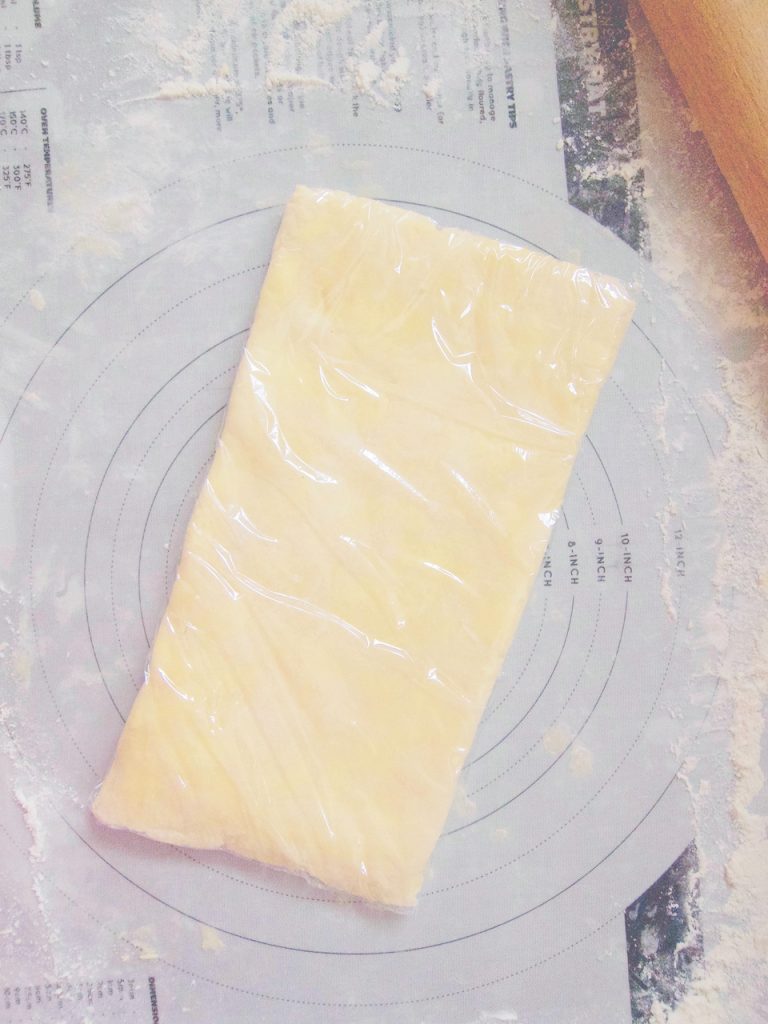
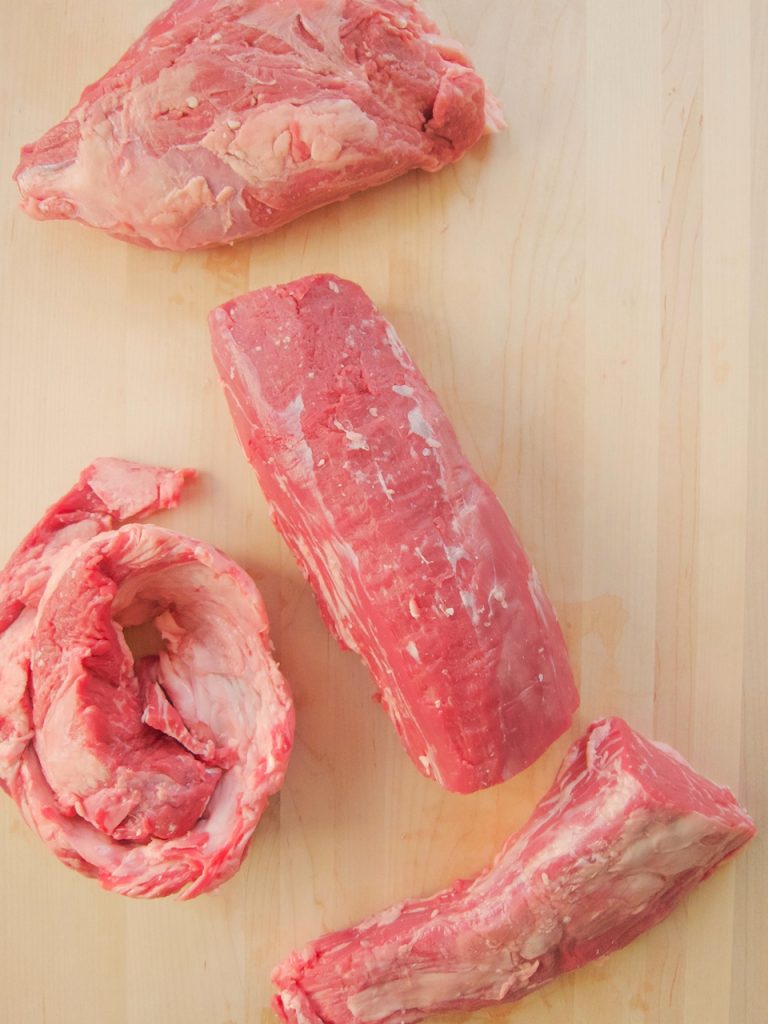
For the Meat
Ingredients
- about a 2 to 2 1/4 pound (around 9″) center cut (chateaubriand) beef tenderloin
- salt
- freshly grated pepper
- avocado oil
- 1 tablespoon prepared mustard
Instructions
Rub the tenderloin with avocado oil and salt and pepper all side. Heat a large heavy skillet and sear the roast on all sides and both ends. Remove from heat and let cool 10 minutes. Brush all sides with the mustard. Let completely cool.
I find it’s easier to assemble the Wellington very tight, so it looks nice when you slice it, if the meat is seared the day before and it’s cold and firm.
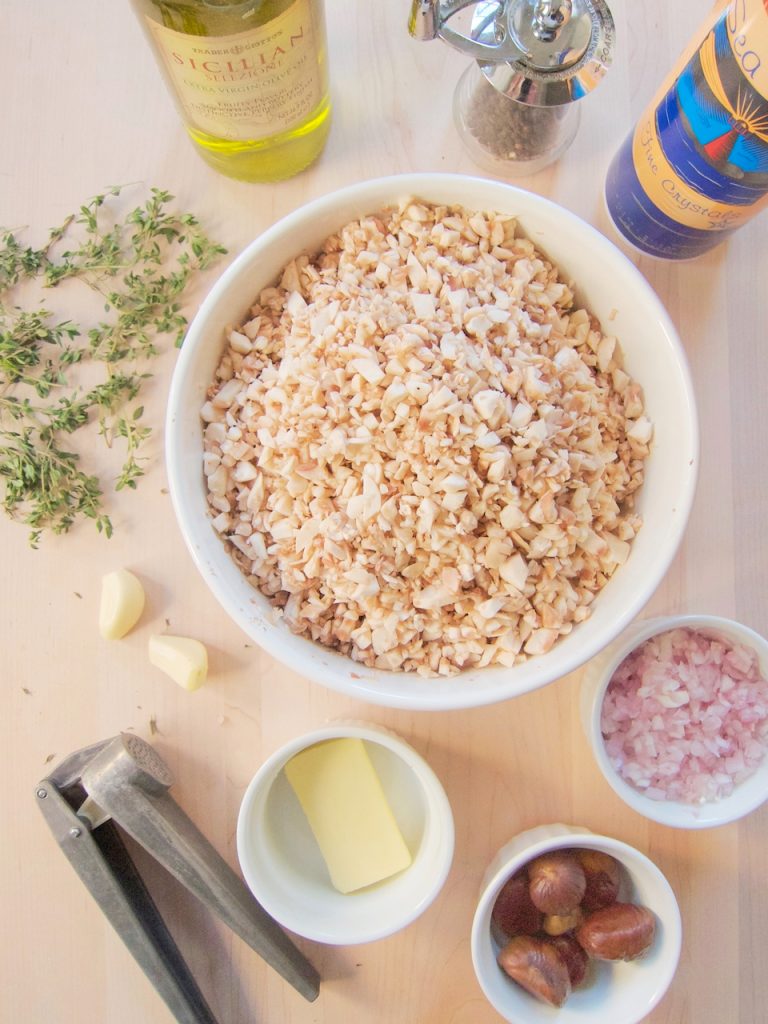
Duxelles Filling
Ingredients
- 1 1/2 pounds white button mushrooms, stems removed, chopped
- 1/2 cup (about 2) chopped shallots
- 2 cloves garlic, minced
- 7 chestnuts, chopped
- 2 teaspoons fresh thyme leaves
- 2 tablespoons butter
- 2 tablespoons avocado oil
- pinch of salt
- pinch of freshly ground pepper
Instructions
Wash the skillet and return it to the heat and add the butter and oil when it’s hot again. Add the mushrooms, shallots, garlic, chestnuts and thyme. Sprinkle lightly with salt and pepper. Cook until dry (moisture can make the pastry soggy), about 25 minutes.
This can be made the day before.
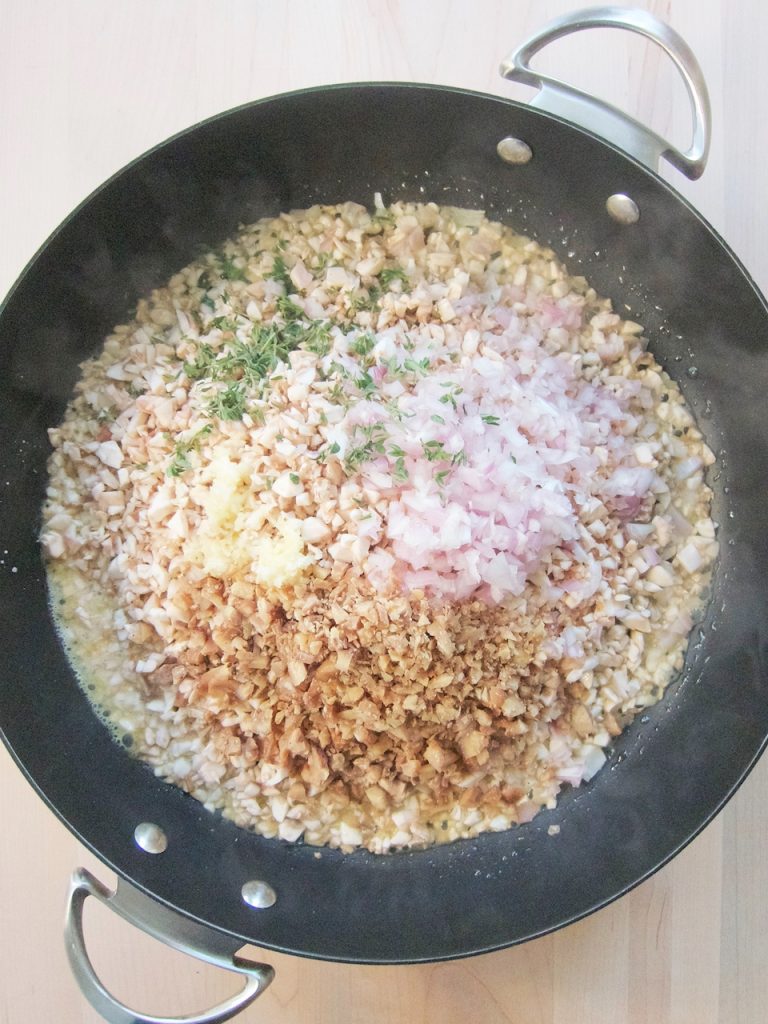
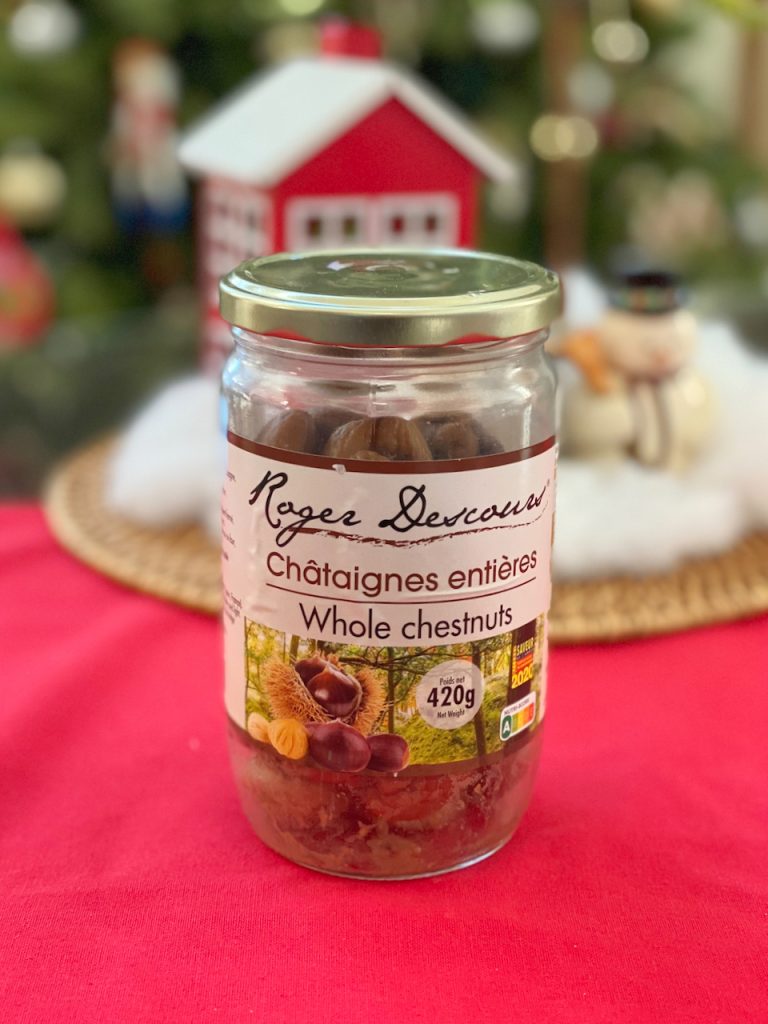
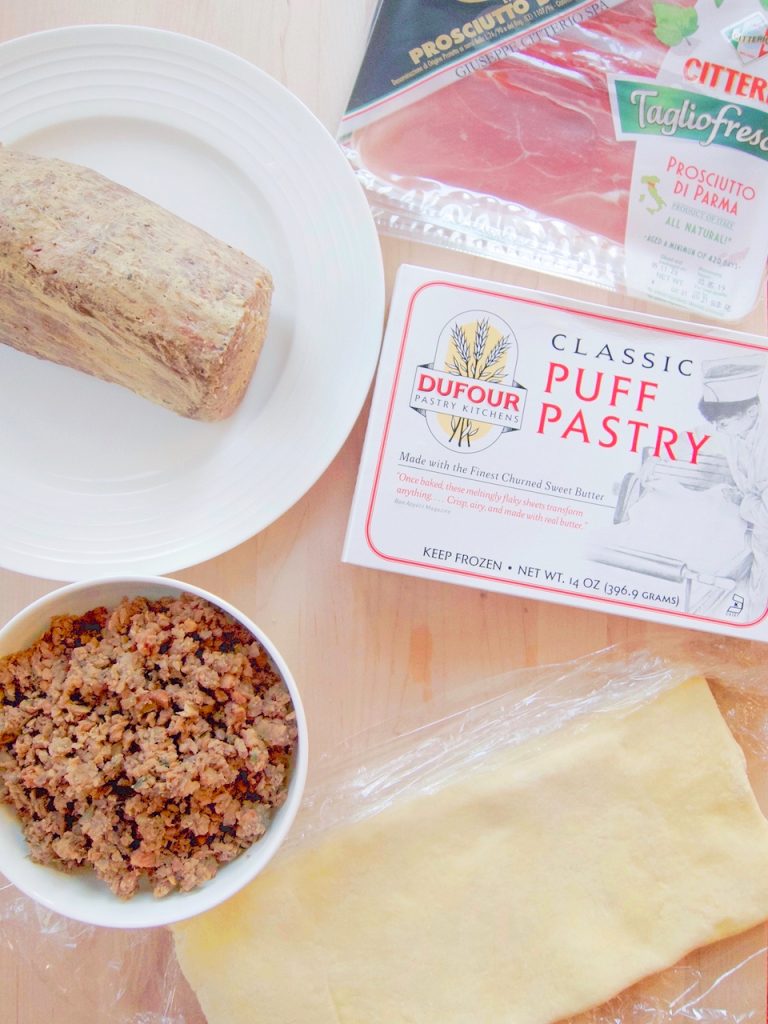
Assembly and Cooking
Ingredients
- about 10 strips of thin prosciutto (Trader Joe’s Taglio Fresco Prosciutto Di Parma is good for this recipe. It’s so thin, there are papers between the pieces so they won’t tear when you separate them. Some prosciutto is thicker and saltier and I feel they make the duxelles too salty.)
- duxelles filling
- prepared chateaubriand
- puff pastry
- 1 large egg, lightly beaten, for egg wash
Instructions
Lay two pieces of plastic wrap down overlapping each other on your workspace so that they are twice the length and width of the meat. Line half the strips of prosciutto next to each other on the plastic wrap, overlapping them and making sure there are no gaps between them. ‘Shingle’ the other half of the strips over the bottom of the first half. These should be the length of the circumference of the meat and enough width, about an inch on each side, to go over the sides of the meat. Spread the filling evenly over the prosciutto. The width of the filling should be about the same as the length of the tenderloin. Place the tenderloin in the middle and use the plastic wrap to lift the prosciutto and duxelles over and around the roast trying to keep everything very snug and then rolling the tenderloin over to the end. This is where watching a video is very helpful. Roll the tenderloin snuggly in the plastic wrap and twist the ends and then place it in the refrigerator while you work on the puff pastry.
Follow the directions on the puff pastry box for thawing time, then place it on a lightly floured surface. If you are using the 10 Minute Homemade Puff Pastry make sure it’s warmed up so it doesn’t tear at the folds when you open it up.
The 10 Minute Homemade Puff Pastry should already close to the right size and you won’t need to roll it again. If you are using bought puff pastry, you may be piecing sheets together, rolling it out and trimming it. You want the pastry to be a little longer than the prosciutto rectangle and ideally it should be wide enough that it extends a little beyond the radius of the ends of the tenderloin so you can wrap the pastry underneath. Grant Crilly’s video shows you this. In Gordon Ramsey’s video you can see how he seals the ends for pastry that is less wide.
When you are figuring out the size, it’s helpful to take the wrapped up tenderloin out and lay it on the pastry and lift the dough around it to see if it ends in the right place and how you will be sealing the sides. Grant Crilly shows you this. The seam where the ends meet will be in the middle underneath and you want the ends to overlap by about an inch. If you are using the 14″ by 16″ 10 Minute Homemade Puff Pastry, you may be trimming off a little from each end so it doesn’t overlap by too much.
When the pastry looks right, place two pieces of plastic wrap down on a surface again, and set the pastry on the plastic wrap. Remove the plastic wrap from the roast and set it at one end of the pastry. Brush a 2″ to 3″ border of beaten egg wash on the other three sides of the pastry. Use the plastic wrap to wrap the pastry around the tenderloin as snuggly as you can. Depending on how much pastry there is, you can bring the dough down over the side and seal it to the bottom with the side of your hand, trim it to clean it up, and fold it under. Or if it’s short, pinch the dough together in the middle at the ends of the Wellington like Gordon Ramsey does on his video.
Chill the Wellington in the refrigerator for at least 20 minutes.
Take out and make cuts with a sharp knife if you want. (I’m not a chef and after doing this a couple times, I learned that it’s going to take a lot of practice to get them all the right depth like they do.)
Egg wash the whole Wellington and sprinkle with flakey salt or Kosher salt.
Bake the Wellington in a 425 degree oven about 40 to 45 minutes until it registers 120 F for medium rare. Let rest 10 minutes before carving.
To reheat leftovers, place cold slices on parchment on a baking sheet and bake in a 350 degree oven until hot.
